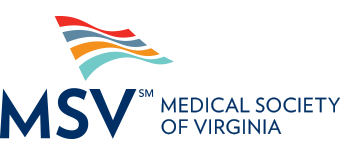Telephone Communication for Healthcare Providers: Strategies to Mitigate Malpractice Claims
Nicole Franklin, MS, CPHRM, Patient Safety Risk Manager II, The Doctors Company
The way we communicate has changed dramatically over the years. Even with the introduction of technology-based communications, such as social networking sites, telemedicine, and texting, the telephone call is still the most widely used communication tool between healthcare providers and patients. Telephone conversations can, however, present difficulties and may be inherently deceptive if both parties lack the ability to observe nonverbal communication (for example, facial expressions, eye contact, and gestures) that clarify and qualify what the voice is expressing.
When casually or carelessly conducted, telephone communications can lead to diagnostic errors and misunderstandings that may culminate in professional malpractice claims.
Mitigate Risk in Telephone Communication with Patients
Creating comprehensive, clear guidelines for telephone encounters with patients is critical in mitigating risk. Establish practice guidelines and ensure that all office and clinical staff are trained on their roles in communicating with patients by telephone. Protect yourself from potential liability by following these general practices:
- Smile when greeting patients. Research has shown that people are able to tell if you are smiling by the tone of your voice. Warmly express to patients that you are happy to speak with them today. This interaction may be the first impression that a patient has of the practice or the staff, and it is a factor in patient satisfaction.
- Triage and refer all critical calls to emergency services. Examples of critical calls include abdominal or chest pain, fever of unknown origin, high fever lasting more than 48 hours, convulsion, vaginal bleeding, head injury, dyspnea, casts that are too tight, visual alterations, and the onset of labor. For more information on this topic, read our article, Telephone Triage and Medical Advice Protocols.
- Obtain as much information as possible about the patient’s presenting complaint, medical and surgical history, current medications, and allergies to help you arrive at an accurate appraisal of the patient’s condition. Listen carefully and allow the caller both the time and opportunity to ask questions.
- Speak to patients clearly and slowly, and enunciate carefully. Use easy-to-understand language that avoids medical terminology.
- Obtain the services of an interpreter if you encounter a language difficulty. Follow the Americans with Disabilities Act (ADA) requirements for patients using telephone auxiliary aids or services, including interpreters. For more information, see ADA Requirements: Effective Communication.
- Avoid distractions, such as checking email or attending to other duties, when speaking with patients. Drowsiness, fatigue, or distraction on the part of either party can affect the ability to communicate effectively.
- Adhere to HIPAA rules and regulations to maintain patient privacy when communicating over the telephone, both inside and outside the office. Use a low voice when discussing protected health information, and implement reasonable safeguards to avoid disclosing information to others not involved in the patient’s care.
- Develop written protocols for front office/unlicensed personnel to help them respond to patient questions and concerns. An unlicensed individual cannot provide medical or dental advice. Clinical/licensed individuals answering patient calls cannot exceed their scope of practice.
- Prescribe or advise by telephone only when you have reviewed the patient’s allergies, medications, and medical and surgical history. If providing new instructions to the patient, such as changing a medication dosage, ensure understanding by asking the patient to repeat back the instructions to you. Document the patient’s understanding in the medical or dental record. For more information on this topic, read our article Rx for Patient Safety: Use Ask Me 3 to Improve Patient Engagement and Communication.
- Accept a third party’s description of a medical or dental condition only when you have confidence in that person’s competence to describe what he or she sees. If descriptions are unclear, the patient may require an office visit.
- Make prompt referrals if the patient’s call concerns a medical or dental problem that is outside your expertise. Proactively track the consultation and expected report, and follow up with the referred provider and patient.
- Confirm that pharmacists understand all dosages and instructions for drug prescriptions given by telephone. Spell out any similar drug names and use individual numbers for dosages, such as “five zero” for 50. Include the reason for the use of the drug. Insist that pharmacists repeat information back to you. Do the same with facility personnel who take your telephone orders. A safer approach is to use electronic prescribing or fax the medication order.
- Verify and document the patient’s adherence with telephone advice through a follow-up contact to ensure continuity of care.
Mitigate Risk During Provider Cross-Coverage
When you will be away from your own practice or covering for another provider, these additional strategies can help you avoid problems:
- Implement a communication process between cross-coverage providers. In several instances, a covering provider has been held completely responsible for damages resulting from a telephone misdiagnosis while the original provider was exonerated.
- Give a brief status report on your acute patients with notice of any anticipated patient calls when handing off care.
- Document all calls in the patient record. Brief the primary provider on all calls during your coverage period.
- Prescribe only the amount of medication the patient requires during the period you are covering for another provider. Pain medications and narcotics should be refilled or ordered only in small amounts and per state regulations.
Document Thoroughly to Mitigate Risk
Disagreements about what was said during telephone conversations can be a major problem in professional malpractice cases. Follow these documentation processes to mitigate this risk:
- Document all patient telephone conversations in the medical or dental record—including those received and returned after hours. Include the date and time of each contact and when follow-up is completed.
- Record all details immediately about the information you received, what you advised, and the orders you gave. This action is especially important when a telephone call occurs after office hours or on a weekend.
- Implement an office process for calls received during office hours. Office staff should tell the caller when the provider is most likely to return the call. Include tracking and follow-up to ensure that the caller’s questions and problems are resolved and documented.
- Document a patient’s hospital medical record with telephone conversations about the hospitalized patient—including any conversations with nurses or other providers.
Effective telephone communication and its documentation are vitally important in preventing and defending litigation.
For further assistance, contact the Department of Patient Safety and Risk Management at (800) 421-2368 or by email.


